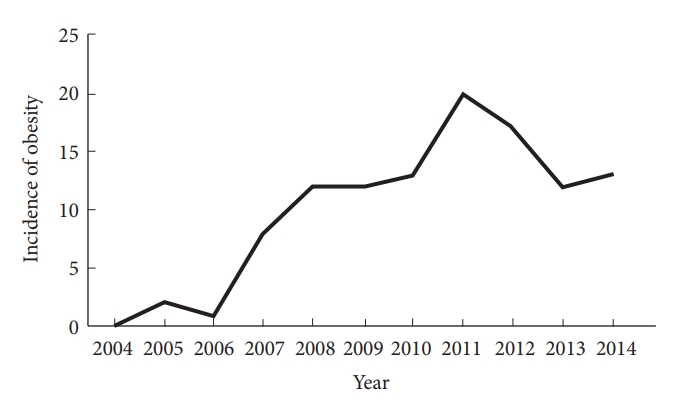2. Koreckij TD, Gandhi SD, Park DK. Cervical disk arthroplasty. J Am Acad Orthop Surg 2019;27:e96-104.


6. Malik AT, Jain N, Kim J, et al. The impact of metabolic syndrome on 30-day outcomes following elective anterior cervical discectomy and fusions. Spine (Phila Pa 1976) 2019;44:E282-7.


7. Mehta AI, Babu R, Sharma R, et al. Thickness of subcutaneous fat as a risk factor for infection in cervical spine fusion surgery. J Bone Joint Surg Am 2013;95:323-8.


8. Malik AT, Noria S, Xu W, et al. Bariatric surgery before elective anterior cervical discectomy and fusion (ACDF) in obese patients is associated with reduced risk of 90-day postoperative complications and readmissions. Clin Spine Surg 2021;34:171-5.


9. Nilsen TI, Holtermann A, Mork PJ. Physical exercise, body mass index, and risk of chronic pain in the low back and neck/shoulders: longitudinal data from the Nord-Trondelag Health Study. Am J Epidemiol 2011;174:267-73.


10. Teraguchi M, Yoshimura N, Hashizume H, et al. Prevalence and distribution of intervertebral disc degeneration over the entire spine in a population-based cohort: the Wakayama Spine Study. Osteoarthritis Cartilage 2014;22:104-10.


12. Zeidan M, Goz V, Lakomkin N, et al. Predictors of readmission and prolonged length of stay after cervical disc arthroplasty. Spine (Phila Pa 1976) 2021;46:487-91.


13. Auffinger B, Lam S, Kraninger J, et al. The impact of obesity on surgeon ratings and patient-reported outcome measures after degenerative cervical spine disease surgery. World Neurosurg 2014;82:e345-52.


14. Elixhauser A, Steiner C, Harris DR, et al. Comorbidity measures for use with administrative data. Med Care 1998;36:8-27.


15. Kaplan SA. Re: National, regional, and global trends in bodymass index since 1980: systematic analysis of health examination surveys and epidemiological studies with 960 country-years and 9.1 million participants. J Urol 2011;186:1982-3.


16. Flegal KM, Kruszon-Moran D, Carroll MD, et al. Trends in obesity among adults in the United States, 2005 to 2014. JAMA 2016;315:2284-91.


18. Hales CM, Carroll MD, Fryar CD, et al. Prevalence of obesity among adults and youth: United States, 2015-2016. NCHS Data Brief 2017;(288):1-8.
19. Buerba RA, Fu MC, Grauer JN. Anterior and posterior cervical fusion in patients with high body mass index are not associated with greater complications. Spine J 2014;14:1643-53.


20. Moore BJ, White S, Washington R, et al. Identifying increased risk of readmission and in-hospital mortality using hospital administrative data: the AHRQ Elixhauser Comorbidity Index. Med Care 2017;55:698-705.

22. Kalanithi PA, Arrigo R, Boakye M. Morbid obesity increases cost and complication rates in spinal arthrodesis. Spine (Phila Pa 1976) 2012;37:982-8.


23. Cao J, Kong L, Meng F, et al. Impact of obesity on lumbar spinal surgery outcomes. J Clin Neurosci 2016;28:1-6.


24. Patel N, Bagan B, Vadera S, et al. Obesity and spine surgery: relation to perioperative complications. J Neurosurg Spine 2007;6:291-7.


25. Vaidya R, Carp J, Bartol S, et al. Lumbar spine fusion in obese and morbidly obese patients. Spine (Phila Pa 1976) 2009;34:495-500.


26. Knutsson B, Michaëlsson K, Sandén B. Obesity is associated with inferior results after surgery for lumbar spinal stenosis: a study of 2633 patients from the Swedish spine register. Spine (Phila Pa 1976) 2013;38:435-41.

27. Loidolt T, Kurra S, Riew KD, et al. Comparison of adverse events between cervical disc arthroplasty and anterior cervical discectomy and fusion: a 10-year follow-up. Spine J 2021;21:253-64.


29. Mehren C, Suchomel P, Grochulla F, et al. Heterotopic ossification in total cervical artificial disc replacement. Spine (Phila Pa 1976) 2006;31:2802-6.

































